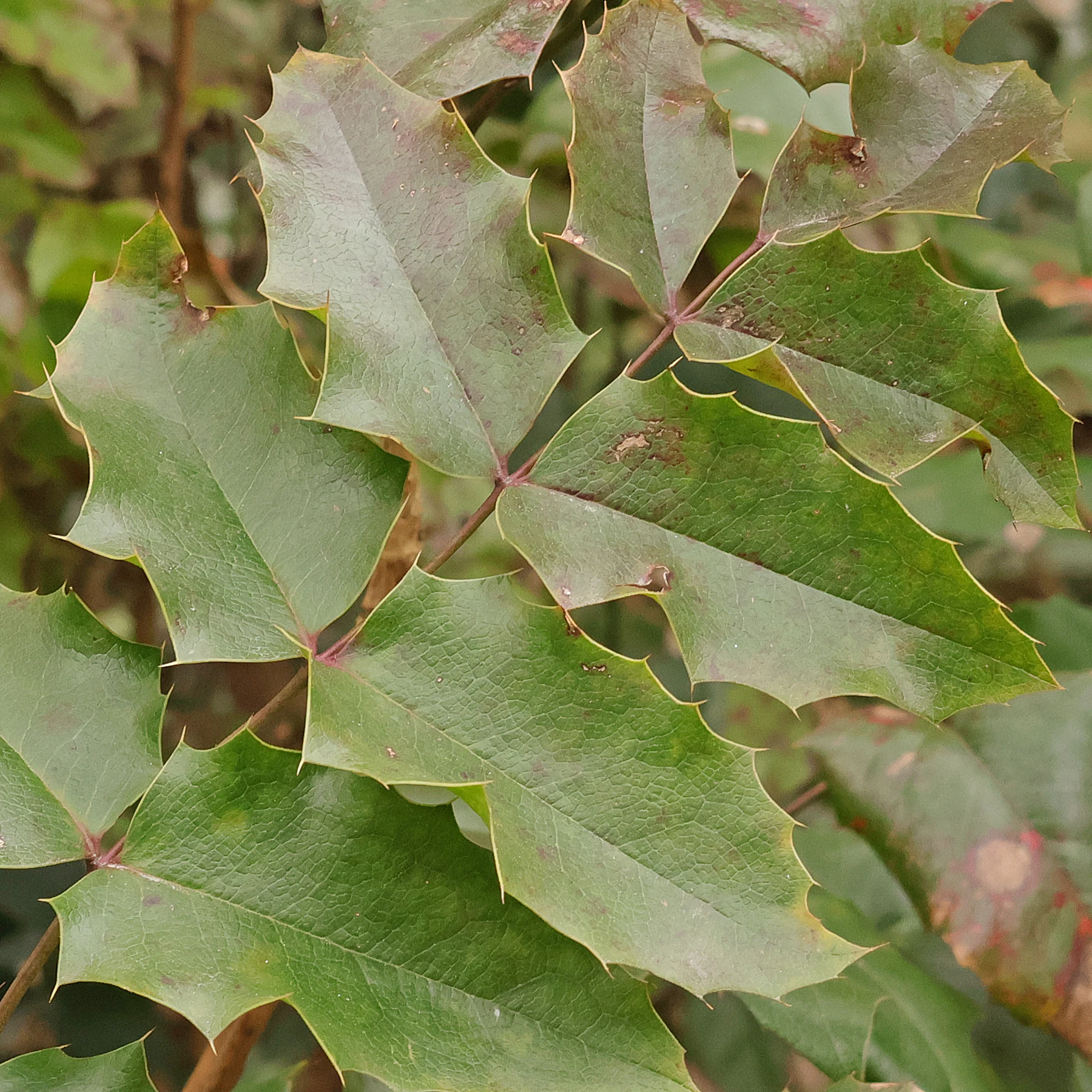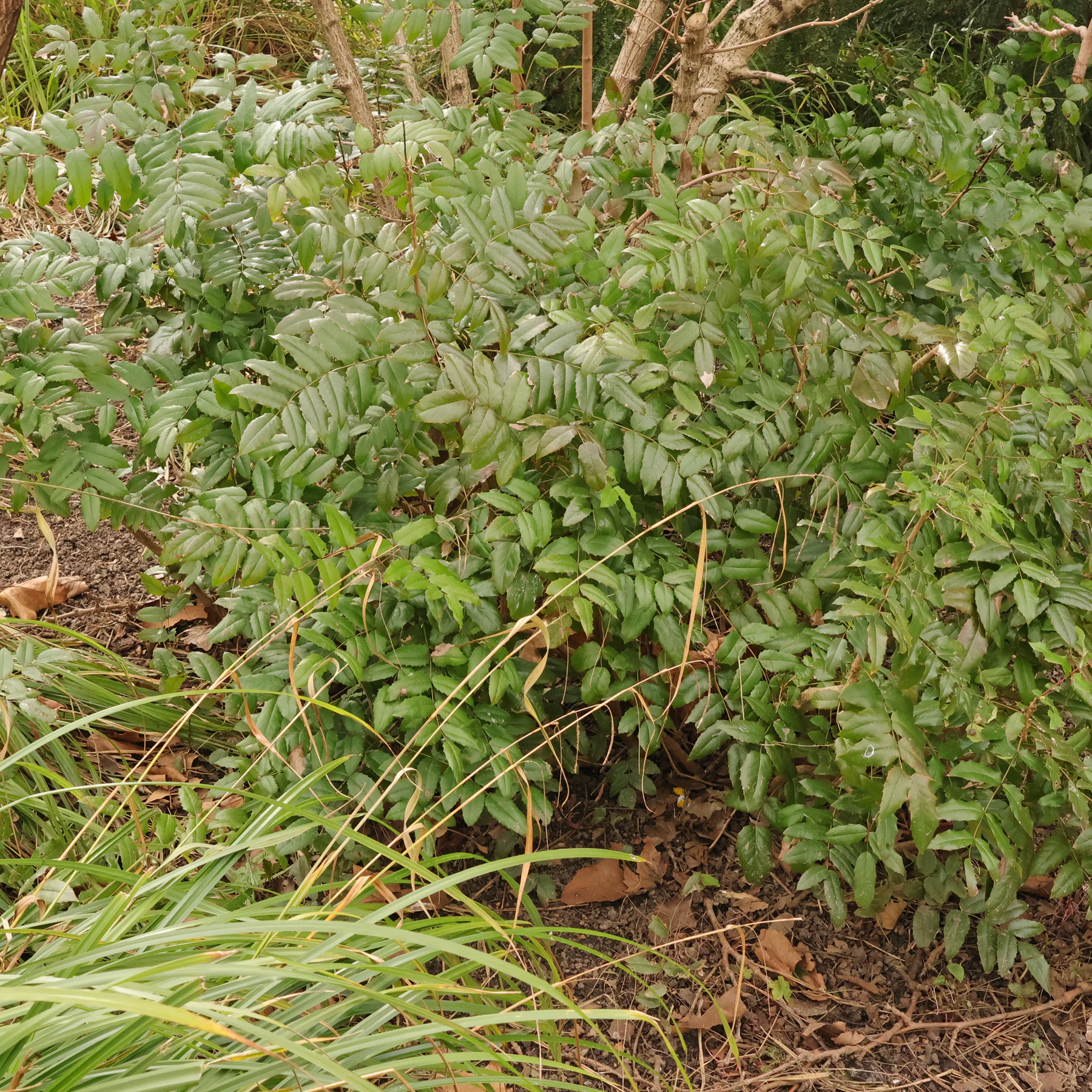Leaf shape: Pinnate with ovate to elliptical single leaves
Phyllotaxis: Alternate (leaflets), opposite (single leaves)
Colour: Dark green, light green, red, reddish brown
Life cycle: Perennial, evergreen
Leaf (upper side)



Habitus & biology
Oregon grape is an evergreen shrub and can reach up to three metres in height. Its leaves can turn red in winter. However, cultivated forms with red leaves are also available. It spreads by seed and short runners.

Distribution & habitates

The original area of distribution of the Oregon grape is in the west of the USA (source). In many European countries it is used as an ornamental plant and has become naturalised.

Oregon grape grows in sunny to shady locations. It is cultivated in parks and gardens. In the wild, it can be found growing along roadsides, shrubbery edges or on embankments.

Botany
Oregon grapeor holly-leaved barberry is a member of the barberry family (Berberidaceae). There is currently no consensus among botanical experts as to whether it should be classified as Berberis aquifolium or Mahonia aquifolium.



 Mahonia × media
Mahonia × media  Epimedium pinnatum
Epimedium pinnatum  Mahonia aquifolium
Mahonia aquifolium